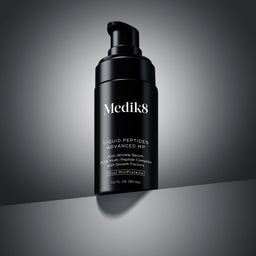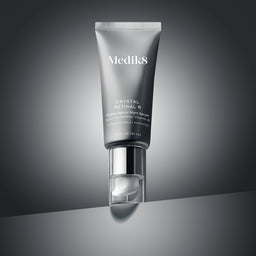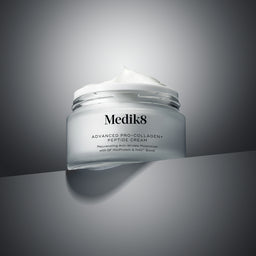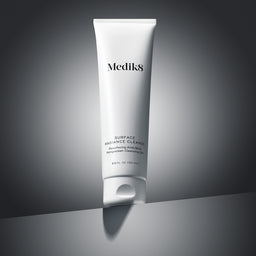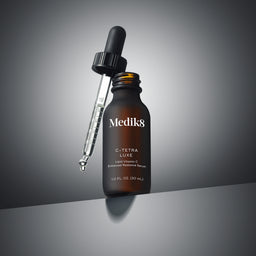Tranexamic acid (TXA):
What is it, what are the benefits and
which skin types does it suit best?

Taking the skincare world by storm, tranexamic acid is a trending hyperpigmentation hero. Keep reading for everything you need to know about this brightening powerhouse ingredient.

What is Tranexamic Acid in Skincare?
Tranexamic acid is an active ingredient that is able to help block the processes within the skin which form uneven tone and dark spots. Think visibly brighter, more clarified skin with a more even tone.
What does Tranexamic Acid do to the skin?
Tranexamic acid is a pigment-suppressor, meaning it can block the overproduction of melanin within the skin. When melanin is overproduced in certain areas of the skin, it can result in uneven skin tone, hyperpigmentation and dark spots.


What are the key benefits?
- Visibly evens & brightens skin tone
- Minimises the appearance of post-blemish marks & dark spots
- Gentle & soothing on skin
- Skin-barrier supporting
- Anti-Ageing
How does it work?
Tranexamic acid provides powerful brightening action, by helping to prevent the formation of dark spots on the skin.
It works by reducing the activity of an enzyme called ‘tyrosinase’, the main enzyme responsible for creating melanin while blocking the transfer of melanin to upper layers of the skin, where it becomes visible as hyperpigmentation on the complexion.
Tyrosinase can go into overdrive when faced with sun exposure, overproducing melanin which can result in uneven patches of tone and dark spots. Combined with wearing sunscreen everyday, tranexamic acid can help to reduce the appearance of hyperpigmentation and visibly brighten targeted areas of the skin.
Tranexamic acid also has a secondary benefit of providing a powerful and specific anti-inflammatory action. It reduces inflammation in the skin by inhibiting the release of proinflammatory signalling molecules. This is particularly useful in preventing post-inflammatory erythema, a.k.a. the pink or red marks that are left on your skin post-breakout or injury.

What skin concerns can Tranexamic Acid help to address?
- Evenness of skin tone
- Stubborn dark spots
- Post-blemish imperfections
- Overall skin radiance
It can target these concerns through its abilities as a pigment-suppressing ingredient.
Tranexamic acid is also an anti-inflammatory, meaning it is super gentle and soothing whilst targeting skin tone concerns.
Which ingredients should I combine with TXA?

Which skin types suit Tranexamic Acid?
- All skin types concerned with hyperpigmentation
- Blemish-prone skin types
- Sensitive skins
- Ageing skins
Where can I find Tranexamic Acid?
Tranexamic acid (2%) can be found in Medik8’s new daily exfoliating toner Press & Clear, featured alongside gentle-release 2% salicylic acid. It is suitable for all skin types, including sensitive, blemish-prone skins that want to improve the overall visible clarity of their skin. Press & Clear offers breakout prevention, action and post-care - all in one everyday toner. We use tranexamic acid to prevent visible post-blemish imperfections and dark spots, while the entire formula is designed to leave the overall complexion nourished and hydrated with the skin barrier intact.

Frequently Asked Questions about Tranexamic Acid
While tranexamic acid isn’t known to make your skin more sensitive to the sun, we always recommend wearing sunscreen in any AM routine to protect your skin from UV damage and the environment.
At Medik8, we know that tranexamic acid can get to work quickly. Press & Clear, featuring 2% of the potent ingredient, is proven to deliver results on post-blemish marks & dark spots:
- Delivers visibly clearer and brighter skin in just 7 days*
- Clinically proven to improve the evenness of skin tone**
- 93% of participants felt the toner helped to stop post-blemish imperfections in 4 weeks**
- Maintains a clear complexion 1 month on from first use*
While all these ingredients are classed as acids, tranexamic acid is not considered an exfoliating acid like AHAs and BHAs. Tranexamic acid is an amino acid derivative, that's where the ‘acid’ comes into the name. While exfoliating acids such as salicylic acid or glycolic acid literally exfoliate the skin, resulting in smoothness and less congestion, tranexamic acid is able to help inhibit the process of dark spots and discolouration forming. Read more about exfoliating acids and how they work in our blog post All About Acids.
<sup>*Proven via independent consumer study conducted over 4 weeks on 50 participants with sensitive, blemish-prone skins.
<sup>**Proven via independent clinical study conducted over 8 weeks on 28 participants with sensitive, blemish-prone skins.
*Proven via independent consumer study conducted over 4 weeks on 50 participants with sensitive, blemish-prone skins.
**Proven via independent clinical study conducted over 8 weeks on 28 participants with sensitive, blemish-prone skins.

